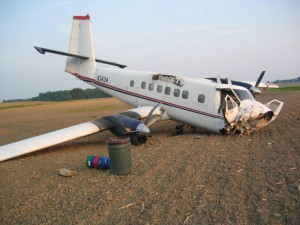The pilot in the landing airplane reported that, he had turned on the airport runway pilot-controlled lighting about 5 miles prior to arriving at the airport, and transmitted 2-mile final radio call, over the airport’s CTAF. He landed the airplane and made “S” turns on runway 28 because, “it is not possible to see the opposite threshold” when established on the runway. When the pilot began a right turn to exit the runway at the mid-field taxiway, an airplane that had initiated a takeoff roll from the opposite end of the runway collided with the landing airplane. The airport’s runway does not have a parallel taxiway and it is standard practice to back taxi to the departure end.

